| Black Sea Marines
Design Notes
By Mike Bennighof, Ph.D.
January 2025
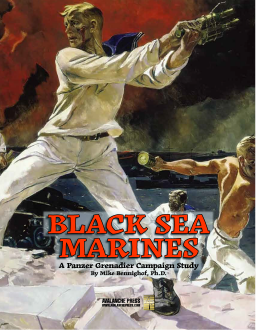 When I designed Panzer Grenadier: River Battleships, I included Soviet Marine pieces so we could have battles with both ground and riverine forces involved. Someone had to do the landing part in the landing scenarios, and the historical scenarios involving the Soviet Danube Flotilla demanded them, too. When I designed Panzer Grenadier: River Battleships, I included Soviet Marine pieces so we could have battles with both ground and riverine forces involved. Someone had to do the landing part in the landing scenarios, and the historical scenarios involving the Soviet Danube Flotilla demanded them, too.
But I also wanted to use them in conventional, ground combat scenarios, which meant we’d need more maps and pieces. I didn’t want River Battleships to become a large (and expensive) game, or to lose its focus on combat between armored river monitors, so we couldn’t include those extras in the game. I learned long ago that adding scenarios that require parts from other games doesn’t make customers happy that they got something extra: instead, the wails of “incomplete game!” echo across the interwebs.
And so we have the Campaign Study, River Battleships: Black Sea Marines. It’s just a short book, with 11 new scenarios featuring the battles of the Soviet Black Sea Fleet’s Marines against the Romanians and the Germans. You’ll need both River Battleships and Fire in the Steppe for maps and pieces, and Armata Romana for the Romanian pieces.
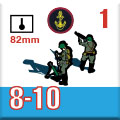 As a historian, I learned to piece together a narrative bit by bit from archival records and musty old secondary sources. The social media side of the internet can be just plain awful, and I do my best to hide from it. But the wealth of historical information – memoirs, field reports and the like – made available on the internet since the turn of the century is just staggering. At times that’s a little concerning, since it also tends to disappear without warning on occasion, and recent enshittification of the internet has made it less and less useful. But for a project like Black Sea Marines, it’s a total inversion of what such research used to require. As a historian, I learned to piece together a narrative bit by bit from archival records and musty old secondary sources. The social media side of the internet can be just plain awful, and I do my best to hide from it. But the wealth of historical information – memoirs, field reports and the like – made available on the internet since the turn of the century is just staggering. At times that’s a little concerning, since it also tends to disappear without warning on occasion, and recent enshittification of the internet has made it less and less useful. But for a project like Black Sea Marines, it’s a total inversion of what such research used to require.
When I designed the first Panzer Grenadier game, detail on the level of Black Sea Marines would have been possible, but only with enormous effort and probably expense. I’d wanted to put the Red Marines in Panzer Grenadier from the very start; when my teenaged self sprawled on my parents’ shag carpet and wrote down a list of expansions that I would craft for this new game I would design, the Black Sea Marines were on it. I had no idea how I would accomplish this (this is still pretty much true for most things I set out to do).
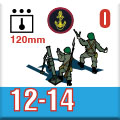 Now, though . . . I ended up with far more information than I could use, and I got to choose the most interesting battles for the Campaign Study. Even then, Susan Robinson, who lays out all of our books, had to deploy all of the magic at her disposal to squeeze everything into Black Sea Marines. It is a very full little book. Now, though . . . I ended up with far more information than I could use, and I got to choose the most interesting battles for the Campaign Study. Even then, Susan Robinson, who lays out all of our books, had to deploy all of the magic at her disposal to squeeze everything into Black Sea Marines. It is a very full little book.
I went with two chapters, one with five scenarios drawn from the Siege of Odessa in August and September 1941, and one with six scenarios from the initial German invasion of Crimea in October and November 1941.
Those choices mesh well with the pieces from Fire in the Steppe and Armata Romana, which are also set in 1941. They also give a clear narrative, as the Marines fight in a defined sector in each campaign, with the scenarios showing the progress of the action. Because of their high morale and firepower (Marines carried automatic or semi-automatic rifles, while Red Army, German and Romanian riflemen had bolt-action weapons), the Red Marines also spearheaded counter-attacks in both theaters. That means that both players, if you and your opponent play through the battle games, get the chance to both attack and defend.
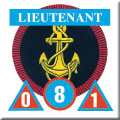 I designed Panzer Grenadier from the outset to give infantry interesting things to do (they’re the Queen of Battle for a reason, after all), in reaction to the utter uselessness of infantry in the ancient Panzerblitz game. The game should be fun to play even in scenarios with not a tank in sight. I actually find those more fascinating than the tank-heavy battles, since you can see the action develop across the game board and adjust accordingly – you’re not going to win or lose because of a sudden mad dash by those Panthers or T34’s. I designed Panzer Grenadier from the outset to give infantry interesting things to do (they’re the Queen of Battle for a reason, after all), in reaction to the utter uselessness of infantry in the ancient Panzerblitz game. The game should be fun to play even in scenarios with not a tank in sight. I actually find those more fascinating than the tank-heavy battles, since you can see the action develop across the game board and adjust accordingly – you’re not going to win or lose because of a sudden mad dash by those Panthers or T34’s.
That makes Black Sea Marines very much my kind of Panzer Grenadier game: there are tanks present in just three of the eleven scenarios. That would have provoked a scream from our long-ago marketing chief (“how the %$#@ am I supposed to sell Panzer Grenadier without panzers?!?”), but I like it that way. The Romanians get tanks in one scenario, the Germans get a few assault guns in another, and the Marines are backed by a couple of tanks in their grand Odessa counter-attack.
 Black Sea Marines balances that with a hefty does of what my old friend Brian Knipple calls my lust for gonzo: that is, unusual stuff in games. There’s a Soviet armored train included in Fire in the Steppe that doesn’t get used in any of that game’s 42 scenarios – but you can play with it in three of the Black Sea Marines contests (one from Odessa and two from Crimea, where you can deploy the armored train “Death to Fascism”). Armored trains are just weird and fun – they have great firepower, but are limited to railroad tracks (duh) and are not nearly as well-protected as a tank. Black Sea Marines balances that with a hefty does of what my old friend Brian Knipple calls my lust for gonzo: that is, unusual stuff in games. There’s a Soviet armored train included in Fire in the Steppe that doesn’t get used in any of that game’s 42 scenarios – but you can play with it in three of the Black Sea Marines contests (one from Odessa and two from Crimea, where you can deploy the armored train “Death to Fascism”). Armored trains are just weird and fun – they have great firepower, but are limited to railroad tracks (duh) and are not nearly as well-protected as a tank.
And in three of the Crimean scenarios, the Marines are supported by the 12-inch (305mm) guns of Fort Maxim Gorkiy. We’ve had Panzer Grenadier scenarios with even bigger guns mounted on battleships, but these weapons had crews and ammunition prepared to fight as artillery (as well as coast-defense weapons). Later in the campaign, they would even fire directly at German tanks and vaporize a few panzers. In our scenarios, the big fort doesn’t have very accurate reporting from the front lines, so the Soviet player has to plot where those big shells will fall (which could be on his or her own guys, if they get careless).
 And there’s also just the sheer quality of the Black Sea Marines: high morale, high initiative, good leadership, strong infantry firepower. The German Army is at its peak in the 1941 campaign, and it’s been the infantry who have steadily overpowered every opponent so far. The Red Marines are their match, or even better. There aren’t that many Marines (that’s what makes them the few and the proud) but they are most definitely elite. And there’s also just the sheer quality of the Black Sea Marines: high morale, high initiative, good leadership, strong infantry firepower. The German Army is at its peak in the 1941 campaign, and it’s been the infantry who have steadily overpowered every opponent so far. The Red Marines are their match, or even better. There aren’t that many Marines (that’s what makes them the few and the proud) but they are most definitely elite.
They continued to fight in front of Sevastopol, until the fortress finally fell to the fascists in May 1942. And they saw action in Crimea, too, particularly in the landings on the Kerch Peninsula at the eastern tip of Crimea. And then they fought the Romanians on the Taman Peninsula, and the Germans at Novorossisk. And that just brings us through 1942.
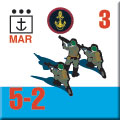 We might go there someday, but for now, Black Sea Marines keeps the tight focus I like, studying two campaigns fraught with action and drama. We might go there someday, but for now, Black Sea Marines keeps the tight focus I like, studying two campaigns fraught with action and drama.
You can order Black Sea Marines right here.
River Marines
River Battleships
Black Sea Marines
Retail Price: $80.98
Package Price: $65
Gold Club Price: $52
You can order the River Marines right here.
Sign up for our newsletter right here. Your info will never be sold or transferred; we'll just use it to update you on new games and new offers.
Mike Bennighof is president of Avalanche Press and holds a doctorate in history from Emory University. A Fulbright Scholar and NASA Journalist in Space finalist, he has published an uncountable number of books, games and articles on historical subjects; a few of them were actually good.
He lives in Birmingham, Alabama with his wife, three children. He misses his dog, Leopold. Leopold enjoyed gnawing his deer antler and editing Wikipedia pages.
Daily Content includes no AI-generated content or third-party ads. We work hard to keep it that way, and that’s a lot of work. You can help us keep things that way with your gift through this link right here.
|
